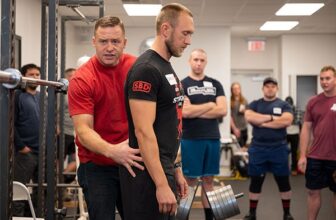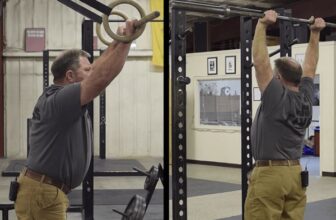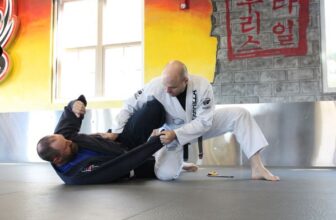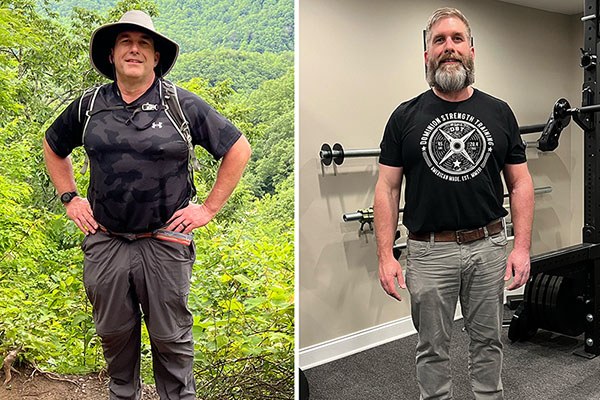
[adinserter block=”2″]
In a country where nearly half of the population suffers from excess
adiposity, it is only reasonable that many of its citizens are
interested in reversing this trend. Excess adiposity, or “fatness”
as most of us know it, is a complex first world issue that has led
many people towards voluntary physical activity, exercise, and
training. The interplay between adiposity and strength training is
one that is poorly understood in the mainstream culture.
In modern day weight
rooms, “aesthetic goals” are almost always mentioned by most
clients. Most often, this refers to a loss of bodyfat. Occasionally,
a new gym member walks in with a desire to get as strong as possible,
with no attention paid to physical appearance. Unfortunately, this is
the exception rather than the rule. Weight loss is a far more common
reason for joining a gym, hiring a coach, and attempting to follow a
lifting program. This is certainly a giant step in the right
direction, away from sitting endlessly and snacking on cookies,
chips, and other bottomless pits of poor food. However, many overfat
people still do not comprehend the purpose behind lifting and
incorrectly assume that it directly addresses the bodyfat component
of their body composition.
Contrary to popular
belief in the diet industry, loss of bodyfat is still a matter of
arithmetic. Energy balance must be negative, meaning that total
energy expended (i.e. calories burned) must exceed energy intake
(i.e. calories consumed). This is accomplished largely through
dietary manipulations in calorie intake, although increasing physical
activity also provides a mild contribution.
Although all increases
in activity contribute to a greater energy expenditure, strength
training primarily alters body composition through an increase in
muscle mass. In most people, muscle mass accounts for 60-80% of their
body composition. Despite this reality, most of the general public
ignores this reality and focuses on the 20-40% of their bodyweight
comprised of fat mass. This is understandable if you have a strong
fat guy who is an advanced lifter, but that is rarely the case.
In many instances,
building muscle mass is completely ignored in favor of extreme
calorie restriction, long-duration endurance exercise and/or
training, and doing an endurance workout under load (i.e. short rest
periods, high reps, high number of exercises, supersets, etc.). This
is not a productive use of time – it often results in a weak
skinny/fat phenotype post- weight loss, a rebound weight gain
exceeding baseline bodyweight, and no meaningful net change in body
composition. Fortunately, we have alternatives, but they are not
easy.
Let’s first define
the overfat lifter to make clear who this article is intended for. To
review, body mass index (BMI) is a measure of bodyweight status based
exclusively on height and weight. The BMI equation along with a table
of categories is shown below. Body fat percentage is a measure of the
ratio of fat to fat free mass and is assessed using various
instruments, which are discussed in detail in my article, Body Composition for Barbell Training.
BMI Categories
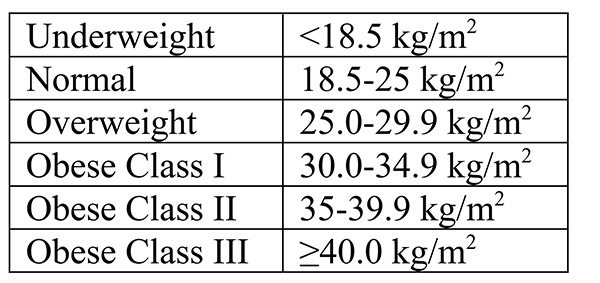
BMI (Metric) = Weight (kg) / Height (m2)
BMI (Imperial) = Weight (lb) / Height (in2) x 703
Overfat is defined as having an untrained body mass index
(BMI) over 30 kg/m2 along with a bodyfat percentage over
30%. This is one situation where BMI can be incredibly useful. The
guy with a body mass index of 22 kg/m2 at 30% bodyfat is
undermuscled. He needs to gain muscle mass and not worry about weight
loss. Likewise, the guy in the overweight category is also
under-muscled and his body composition is likely to improve with
training, and minimal weight change. However, the untrained guy in
the “obese” category has a high bodyfat percentage because he is,
in fact, too fat. One day he will earn his badge of honor and
be “obese” with a normal fat percentage, but if he is untrained
he probably needs to lose fat.
Novice training for the
overfat lifter is straightforward, and decent progress is possible as
long as the lifter does some of the program most of the time. This
means a novice can under-eat and still get stronger than he was at
baseline. He won’t be a novice as long as the overfat novice who
eats at a maintenance or surplus level, but he will still progress
well. Unfortunately, post-novice lifters don’t have it quite so
easy. I have encountered many post-novice lifters who have reached a
point where the demand of their training is at odds with their desire
to achieve a certain physical appearance. To train harder, the lifter
must eat more calories, especially from carbohydrates.
In contrast, to reduce
bodyfat the lifter must eat fewer calories, primarily from both fats
and carbohydrates. Eating fewer calories will inevitably delay
recovery or impair it entirely. The greater the restriction required
to lose bodyfat, the less flexibility the lifter has in terms of
lifestyle and the stranger his behavior will need to become to
continue losing more bodyfat. He is going to piss you off in public
more often than you would like. Give it enough time and he will grow
out of it like the rest of us have.
A calorie restricted
lifter cannot typically dine out often if he is unable to regulate
the amount of food consumed either in the restaurant or throughout
the day at home, especially the more metabolically efficient he is.
Calorie restriction must be maintained for 7 consecutive days at a
time to elicit fat loss. This is typically not unreasonable for the
fat guy trying to go from obese to “chubby” or reasonably lean
because his total calorie intake will still be reasonable.
The guy who is already
at a normal bodyweight is an entirely different situation. This guy’s
body is resisting fat loss as he tries to mobilize otherwise
non-problematic fat stores. Training becomes difficult, energy levels
drop, and hunger increases incrementally as fat stores deplete. This
situation is entirely incompatible with heavy strength training and
an impairment in performance is inevitable.
This is one reason why
bodybuilders lift light weights for higher repetitions and at higher
training volumes. The caloric demand from lifting light weights is
often lower, contrary to what the exercise-addicted volume people
say. Under-eat before a training day consisting of heavy fives and
triples and see what happens. Better yet, step on the platform and
attempt a new 1RM and see if it ends the same way as the last rep of
a set of 12.
Now, we are in the
business of getting people stronger and “physique” training is
not what we do. However, some people legitimately need to lose
bodyfat and since we know you are going to go on a “cut,” while
trying to train for strength, let’s go over some ways to minimize
the damage. This way you don’t get hurt and decide that the leg
press and smith machine are safer or pursue the oxymoronic idea of
“lean gains.” If you want “lean gains,” put on enough muscle
mass so that everything except your abs are still visible at 20%
bodyfat.
If the goal is purely
to reduce the total amount of fat mass, calories must be restricted
for 7 consecutive days at a time and a lifestyle disruption is almost
inevitable. Follow the 7-day rule with tunnel vision so you can get
this over with as quickly as possible. Since eating fewer calories to
lose fat prevents you from training at high intensities, intensity
must come down first since you lack the resources to push heavy
weights.
Running Texas Method on
“a cut” is a Very Bad Idea, and for the 2938493904830805th time:
Don’t Do It. It Won’t Work. Since you are not going to run
Texas Method or any other demanding strength program, you will need
to train so you can stave off as much muscle and strength loss as
possible. Intensity will decrease, which means volume will increase.
This does not mean start a cycle of German Volume Training either.
This simply means that a new 5-rep PR every week or every other week
is not the focus.
You will still be doing
your fives, and you just may be adding tempo or pauses to your main
lifts, performing more assistance exercises, or other methods that
make the lighter weight feel difficult while you are trying to lose
bodyfat. The goal is to complete the reps and progress each workout,
to the extent that they can be progressed, without throwing out your
back, hips, or knees in the process. That may mean load increases
slow down or happen less frequently. Multiple load resets may also
occur throughout the process. The goal is to stay productive while
you are under-eating to lose weight. Any progress made is a bonus
here and sometimes we end up surprised. You are “artificially more
advanced” due to the longer recovery time, until you start eating
more calories again.
For better or worse,
the desire to lose bodyfat has drawn more people into the gym than
any other variable in the gym business. There are certainly many
people that will benefit from substantial fat loss. Walking around at
40-50% bodyfat is not healthy and getting the excess bodyweight off
should be a high priority. Trying to artificially stay at 7% bodyfat
is also equally unhealthy for virtually everyone except for those who
are naturally that lean. Walking around at 20% bodyfat with an
“overweight” body mass index may not be a bad thing if you have
gotten sufficiently strong in the process.
Remember, all weight
standards were largely derived from poorly collected data sets that
did not control for strength training status (or anything else that
matters). In other words, a fat guy who trains is healthier, or
less-unhealthy at worst, than a fat guy who doesn’t train. Getting
stronger will also improve your physical presentation regardless of
bodyweight. The 400lb guy who trains will look better than his
untrained self, as will the 6’2” 185lb guy who thinks he needs to
go on a cut. The difference is the 400lb guy will need to lose
bodyweight, whereas the 185lb guy will need to address his psychology
and gain weight for a period of time.
No matter the person,
getting stronger will improve physical function, physical appearance,
and a long list of other variables that will enhance your life.
Staying weak, whether fat, skinny, or anything in between, does not
end well. Stop doing it and get under the bar, get your nutrition in
order, and begin the process. Your older and stronger self will thank
you later.
[adinserter block=”2″]
Credit : Source Post




